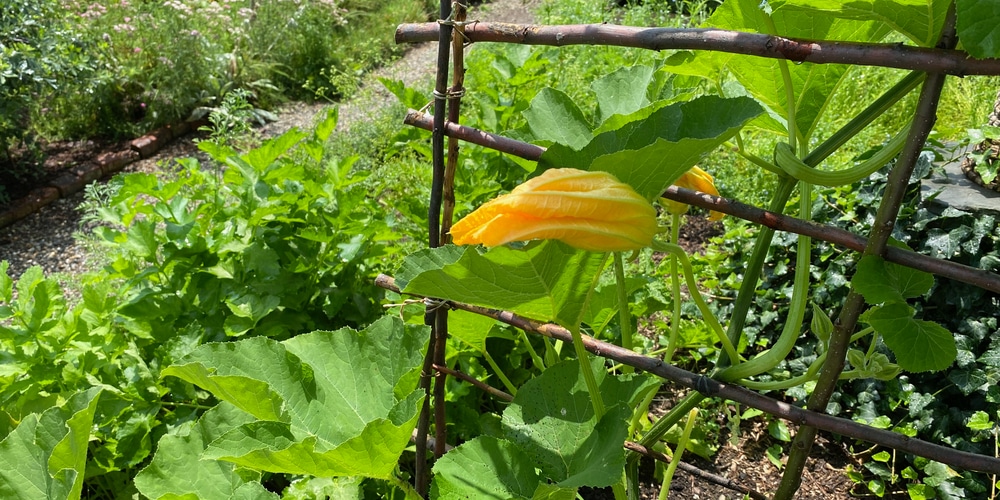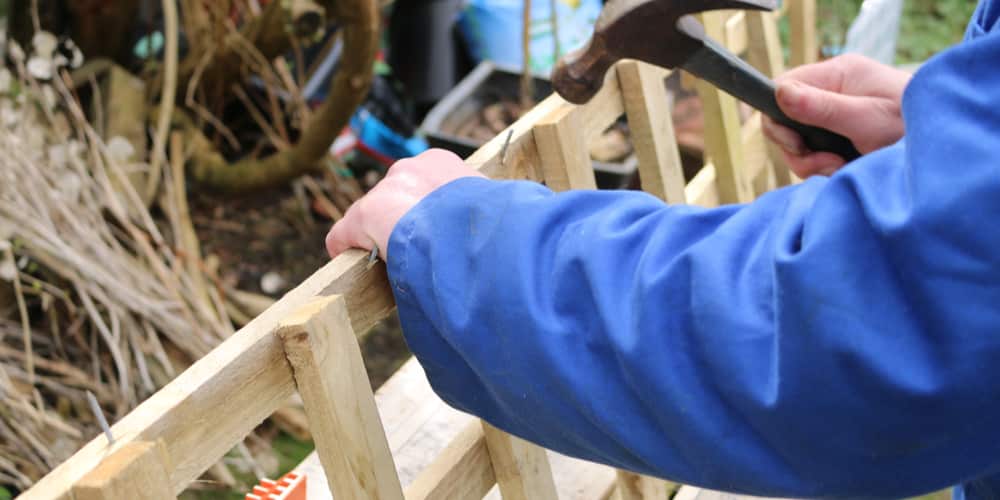If you grow vegetables in your garden, you might have noticed that species have different growing habits. For example, zucchinis have a trailing nature that can cause these plants to take over parts of your yard. Under ideal conditions, these crops will produce abundant harvests and delight you with dense foliage.
But since they are such fast-growers, you may wonder whether these plants need support or not. After all, they might look crowded in little time. So, in essence, does zucchini need a trellis? Why or why not? If these questions are running around your mind, keep reading. We collected all the information you must have about this subject in this essential guide.
Does Zucchini Need a Trellis?
There are several zucchini species out there. But mostly, supporting them is an optional activity. If you have unlimited space at your disposal, there is no need to give your plants a trellis to climb.
As you will see in the following sections, vertical growth can be beneficial. However, you can allow your plants to grow naturally and get satisfactory results.
Remember that some zucchini varieties might not climb as much as others. So, ensure you know which one you added to your garden before creating a support structure for your crops.
Additionally, you may want to consider other methods for growing zucchinis. For instance, if you’d like to get abundant harvests, you should grow them in a five-gallon bucket. Of course, you can grow them in other types of containers too. But five-gallon buckets are large enough to support this fast-growing veggie’s growth.
But even if you won’t necessarily have to add a trellis to your zucchinis, there are several advantages to doing so. Learn more about them in the following sections!
Benefits of Providing Support to Your Zucchinis
While zucchinis don’t need support to survive, adding a trellis (or any other structure they can climb around) can make things easier for you. To begin with, providing support to your crops limits their growing space, preventing your zucchini from taking over parts of the garden where you are growing other plants.
So, if you have limited space in your yard, this might help you optimize the use of your vegetable garden.
Growing zucchinis on a trellis allow for better air circulation and sun exposure. According to many gardeners, vertical crops growing are less susceptible to diseases and fungal infections.
After all, as the fruits don’t touch the ground, they have fewer chances of suffering from attacks from pests and soaking too much water from the soil. And because zucchinis produce climbing vines, you won’t have issues growing them on a trellis.
Finally, growing zucchini around the trellis means less bending when picking the fruits. So, overall, harvesting your crops will be a more enjoyable experience. And even if it isn’t something you need to do, it will help you get better results from your vegetables.
Additionally, it may prevent future headaches.
How Do You Grow Zucchini On A Trellis?
If you prefer growing your zucchini on a trellis, you should get the support that is at least six feet high. The truth is that you don’t need a fancy structure for this purpose. If you don’t want to spend too much time on this, you can get a few boards: they will be enough to support your crops’ growth.
Place the trellis at least one foot deep into the soil to ensure a sturdy frame. You can increase stability by adding several stakes no more than 6 feet from each other. Of course, you must pay attention not to block the sunlight to other plants with your trellis.
After building your frame, you should add chicken wire to the stakes. When your zucchini plants are tall enough to reach the trellis, tie their vines with a strip of fabric. Doing so will train your crops to grow around the structure. Avoid tightening your plant’s stems too tightly as it may harm their growth. You should leave your plant in these conditions for at least a few weeks.
Once the plant seems to have found its way around the trellis, you may untie it. Then, you must take care of your crop as you would if growing it on the ground. Don’t forget to watch out for pests and diseases and take prompt action if you notice something off with your plant.

